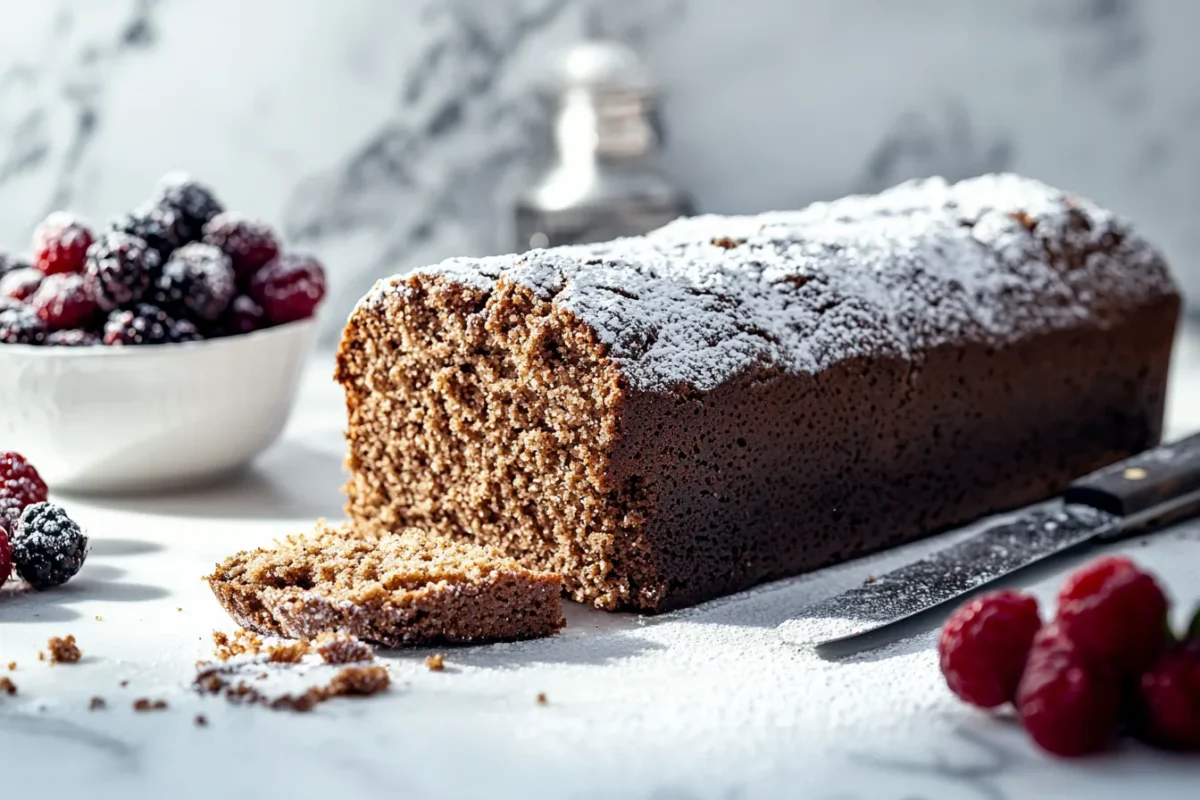Are you tired of using the same flour for every cake recipe? If you’re wondering, can you use buckwheat flour for cakes, the answer might surprise you! Buckwheat flour isn’t just a healthy alternative; it’s also packed with flavor and texture that can make your cakes truly special.
First, buckwheat’s unique nutty taste adds depth to your baked goods. Then, its gluten-free nature makes it perfect for those avoiding wheat. Whether you’re baking for a party or a cozy family dessert, buckwheat flour works beautifully in both sweet and savory cakes.
Why not try something new? With simple tweaks, you can create delicious cakes that stand out. Keep reading to discover why buckwheat flour is a game-changer in baking. You’re going to love how easy and versatile it is—let’s dive in!
Table of Contents
Why Buckwheat Flour is Great for Cakes
The Nutty Taste and Texture of Buckwheat
Buckwheat flour adds a bold, earthy flavor to cakes, making it a standout choice for baking. Its nutty undertones pair beautifully with ingredients like chocolate, vanilla, or citrus, offering versatility for sweet and savory recipes. The texture it brings is slightly dense but pleasantly tender, giving cakes a satisfying bite.
First, buckwheat flour works well on its own for rustic-style cakes. Then, when mixed with other flours, it creates a balance of fluffiness and structure. Additionally, its darker color enhances the visual appeal of baked goods, giving them a unique, artisanal look. To see a creative twist, visit Savory Buckwheat Cakes Recipes.
Another benefit of buckwheat flour is that it’s naturally gluten-free. This makes it a favorite for those with dietary restrictions. Its distinctive taste and adaptability in recipes make it a fun option to experiment with. What do you think about buckwheat’s nutty flavor? Share your thoughts in the comments below!
Nutritional Benefits Buckwheat Flour Adds to Cakes
Buckwheat flour not only tastes great but is packed with nutrients that benefit your body. It is naturally gluten-free, which makes it an excellent choice for those avoiding gluten. Additionally, buckwheat is rich in fiber, which supports digestion and helps you feel full longer.
First, it contains plant-based protein, ideal for vegetarians and vegans. Then, it provides essential minerals like magnesium and potassium, which are beneficial for heart health. Another plus is that it has antioxidants, which help fight free radicals in your body.
When used in cakes, buckwheat flour adds a wholesome boost without sacrificing flavor. It’s also lower in calories compared to some other flours, making it a smart option for lighter desserts. Whether you’re baking for health reasons or flavor, buckwheat flour is a perfect choice. Check out Benefits of Gluten-Free Diets to understand more about its health advantages. For inspiration, see Gluten-Free Dairy-Free Breakfast!
Creative Cake Ideas Using Buckwheat Flour
Sweet Treats with Buckwheat Flour
Sweet cakes made with buckwheat flour are flavorful and exciting, offering a unique alternative to traditional recipes. The flour’s nutty undertones enhance desserts like chocolate cakes, pound cakes, or even fruit-based options like banana or apple cakes.
First, buckwheat flour works beautifully in gluten-free recipes when paired with almond flour for added richness. Then, its ability to lock in moisture makes it ideal for cakes that need to stay fresh longer. Adding ingredients like honey, cinnamon, or vanilla further complements its bold flavor and versatility.
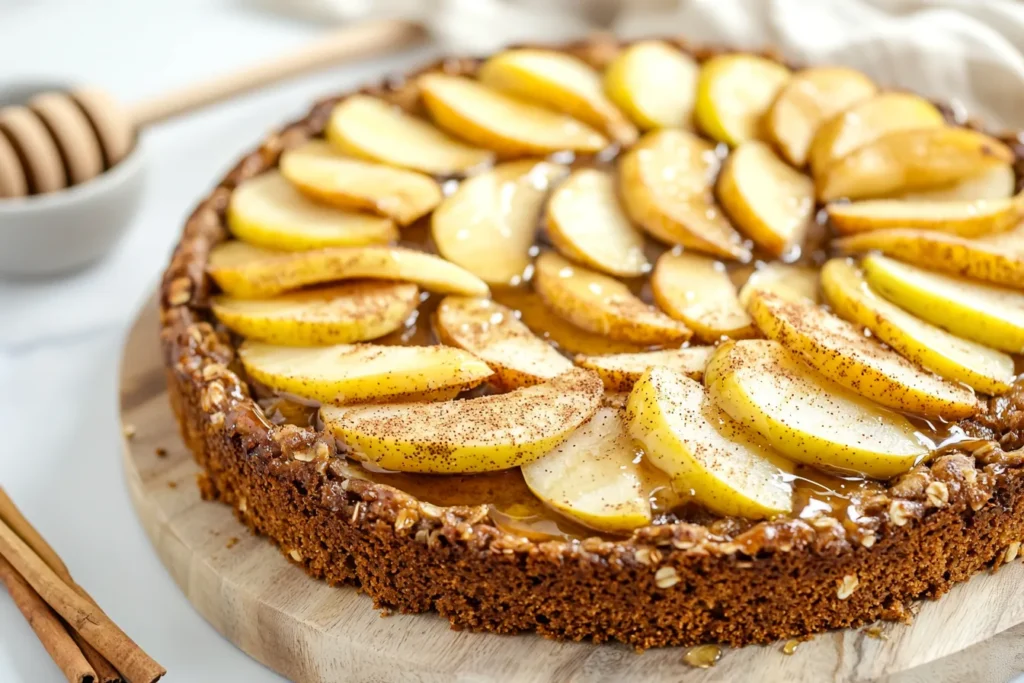
You can also create visually appealing desserts with buckwheat’s darker hue. Imagine topping a buckwheat chocolate cake with a dusting of powdered sugar or fresh berries—it’s a showstopper dessert that’s hard to resist. Explore other ideas, such as Cornbread Chocolate Cake, for inspiration! Have you tried baking a sweet buckwheat cake before? Let us know your favorite combination in the comments!
Savory Bakes with a Buckwheat Twist
Savory cakes with buckwheat flour are an exciting twist that’s perfect for brunches, dinners, or appetizers. Its robust flavor pairs wonderfully with savory ingredients like cheese, herbs, and vegetables for a bold bite.
First, you can create a delicious zucchini and feta buckwheat cake for a hearty dish everyone will enjoy. Then, try incorporating spinach, sun-dried tomatoes, or even caramelized onions for a burst of flavor in every slice. These savory cakes work well as a side dish or a light meal when paired with salads or soups.
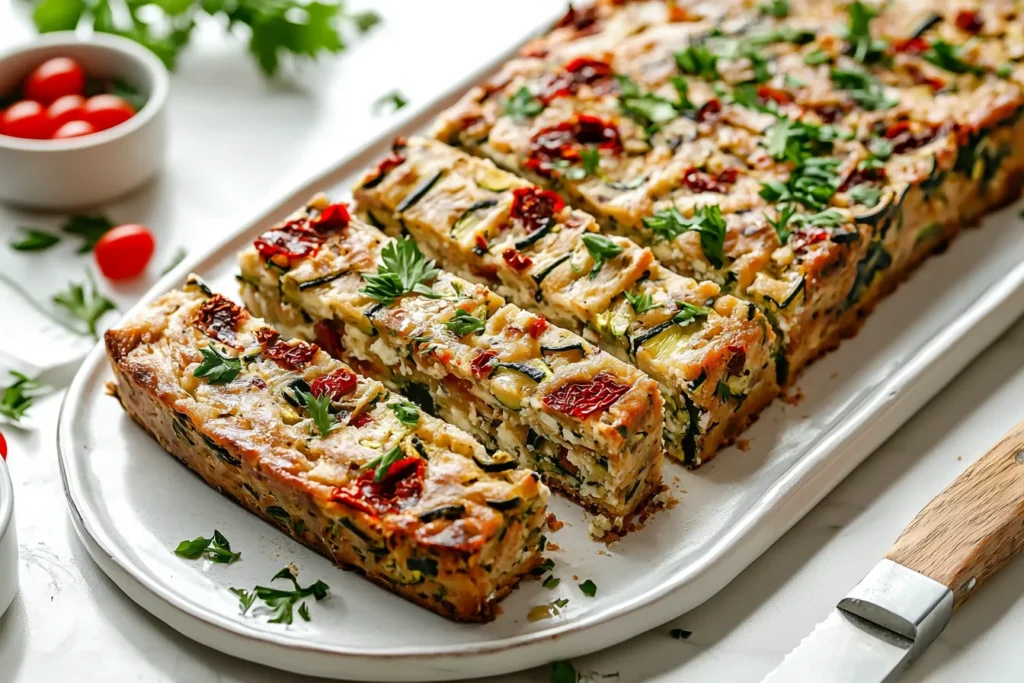
Additionally, savory buckwheat cakes can be made into mini versions, ideal for party appetizers and quick bites. Topped with smoked salmon, cream cheese, or a drizzle of olive oil, they become elegant bites for guests. The possibilities are endless, and with each recipe, you’ll discover new ways to enjoy the bold taste of buckwheat flour. Check out the Lupin Falafels Recipe for another creative appetizer idea!
Tips for Substituting Buckwheat Flour in Cake Recipes
Balancing Buckwheat with Other Flours
When substituting buckwheat flour in cake recipes, getting the right ratio is key to success. Buckwheat flour alone can make cakes dense, so mixing it with other flours is essential for balance. A great starting point is using 50% buckwheat flour and 50% all-purpose or almond flour, depending on your recipe needs.
First, this blend balances the strong nutty flavor of buckwheat with a lighter, airier texture. Then, adjusting the ratio slightly based on the cake type can enhance its overall consistency. For example, heavier cakes like pound cakes might benefit from more buckwheat, while spongy cakes need less for the best results.
Additionally, sifting the flours together helps ensure even mixing and avoids clumps, which could affect the texture. By experimenting with these ratios, you’ll find the perfect balance for each recipe and achieve consistently excellent cakes.
Tips for Adjusting Liquids with Buckwheat
Buckwheat flour absorbs more liquid than other flours, so adjustments are essential to prevent dryness in cakes. First, increase the liquid content slightly by adding extra milk, yogurt, or even a touch of water. This keeps the batter smooth and ensures the cake stays moist throughout.
Then, incorporating wet ingredients like applesauce, mashed bananas, or honey can boost moisture while adding a unique flavor. These natural additions complement buckwheat’s nutty taste beautifully and enhance the richness of the final cake. Also, mixing the batter gently helps maintain its structure without over-drying, which is a common issue.
It’s important to monitor the consistency as you go. The batter should feel slightly thicker than traditional recipes but still pourable. By making these simple adjustments, you’ll create cakes that are moist, delicious, and absolutely perfect every time. Give it a try—you’ll love the results!
Gluten-Free Baking with Buckwheat Flour
Crafting Tasty Gluten-Free Cakes
Gluten-free baking with buckwheat flour opens up a world of delicious cake possibilities. First, buckwheat’s natural gluten-free properties make it a perfect choice for people avoiding wheat. Then, its rich, nutty flavor enhances both sweet and savory cakes, offering a unique twist on classic recipes.
Pairing buckwheat with other gluten-free flours like almond or rice flour helps balance the texture, making cakes lighter and fluffier. Adding eggs or flaxseed gel provides structure, ensuring the cake holds together well. Also, wet ingredients like yogurt or buttermilk keep the batter moist, preventing the dryness often found in gluten-free bakes.
Topping a gluten-free buckwheat cake with fresh fruit, nuts, or a simple glaze can add even more flavor and visual appeal.
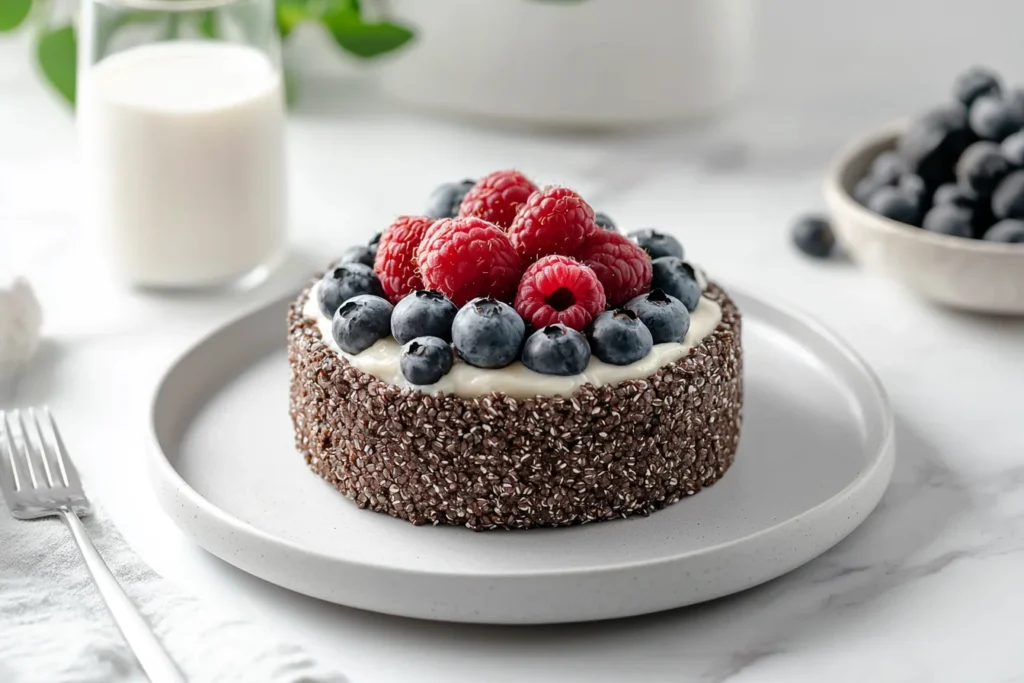
With the right combinations, gluten-free cakes made with buckwheat can be just as satisfying and crowd-pleasing as traditional versions.
Perfecting Gluten-Free Cake Textures
Creating the perfect texture in gluten-free cakes made with buckwheat flour is all about balance. First, using a mix of flours ensures the cake doesn’t feel too dense or heavy. Adding starches like tapioca or potato starch to the mix lightens the texture and makes it feel more like a traditional cake.
Next, incorporating whipped egg whites into the batter adds air and helps the cake rise beautifully. This step is especially useful for sponge cakes or chiffon-style recipes. Then, be mindful of how much liquid you add, as buckwheat can absorb more than other flours.
Additionally, baking at a slightly lower temperature for a longer time helps the cake cook evenly, preventing dry edges and undercooked centers. By following these tips, you can achieve soft, light, and perfectly textured gluten-free cakes that everyone will enjoy. Try it today and see the difference!
Common Mistakes to Avoid When Using Buckwheat Flour
Overcoming Dryness in Buckwheat Flour Cakes
One common challenge when baking with buckwheat flour is preventing dryness in cakes. First, buckwheat flour tends to absorb more liquid than traditional flours, so adjusting the amount of liquid in your recipe is essential. Adding ingredients like yogurt, applesauce, or mashed bananas can introduce extra moisture and keep your cake soft and tender.
Next, avoid overmixing the batter, as this can make the cake dense and dry. Mix the ingredients just until combined to maintain a light texture. Also, using a combination of buckwheat flour with another flour, such as oat or almond, can balance the texture and improve the cake’s overall moisture level.
Finally, consider brushing your cake with a simple syrup after baking to lock in moisture. By taking these easy steps, you’ll enjoy buckwheat cakes that are moist, delicious, and perfect every time.
Avoiding Bitter Notes in Buckwheat-Based Cakes
Buckwheat flour’s earthy flavor can sometimes taste bitter if not handled correctly. First, make sure to use fresh, high-quality buckwheat flour, as older flour can develop a stronger, unpleasant taste. Roasted buckwheat flour often has a milder flavor, so consider trying it for your recipes.
Next, balance the boldness of buckwheat by pairing it with complementary flavors. Sweeteners like honey or maple syrup work wonders to counteract any bitterness, as do spices like cinnamon, nutmeg, or vanilla extract. Then, adding fruit, such as bananas or berries, can further enhance the flavor and create a well-rounded cake.
Additionally, using the right amount of salt is key, as it brings out the natural sweetness of the other ingredients while toning down the bitterness. With these tips, you can bake buckwheat cakes that are flavorful and enjoyable for everyone.
Creative Additions to Complement Buckwheat Flour Cakes
Using Fruits, Nuts, and Spices for Added Flavor
Adding fruits, nuts, and spices to buckwheat flour cakes is a fantastic way to elevate their flavor. First, dried fruits like raisins, cranberries, or chopped dates bring a natural sweetness that balances buckwheat’s earthy notes. Fresh fruits such as apples, pears, or blueberries work beautifully as well, adding bursts of freshness and moisture.
Next, nuts like walnuts, almonds, or pecans provide a satisfying crunch and rich flavor to your cakes. Toast the nuts lightly before adding them to enhance their taste and create a deeper aroma. Additionally, incorporating warm spices like cinnamon, ginger, or cardamom can create a comforting and aromatic flavor profile.
Finally, consider combining these elements for a unique twist. For instance, try pairing walnuts with cinnamon and apples for a cozy fall cake. With these simple yet effective additions, your buckwheat cakes will be flavorful and unforgettable.
Pairing Toppings for a Perfect Buckwheat Cake Finish
The right toppings can transform your buckwheat cake into a showstopping dessert or savory delight. First, for sweet cakes, try dusting powdered sugar over the top for a simple, elegant look. Then, add whipped cream, honey drizzle, or fresh berries to elevate its appearance and flavor.
Next, for savory variations, consider cream cheese spreads, herbed yogurt, or a light drizzle of olive oil. These toppings not only enhance the flavor but also complement the cake’s texture perfectly. For an extra layer of creativity, garnish with fresh herbs like parsley or chives for a visually stunning finish.
Finally, experiment with unique combinations, such as topping a chocolate buckwheat cake with a sprinkle of sea salt or caramel sauce.
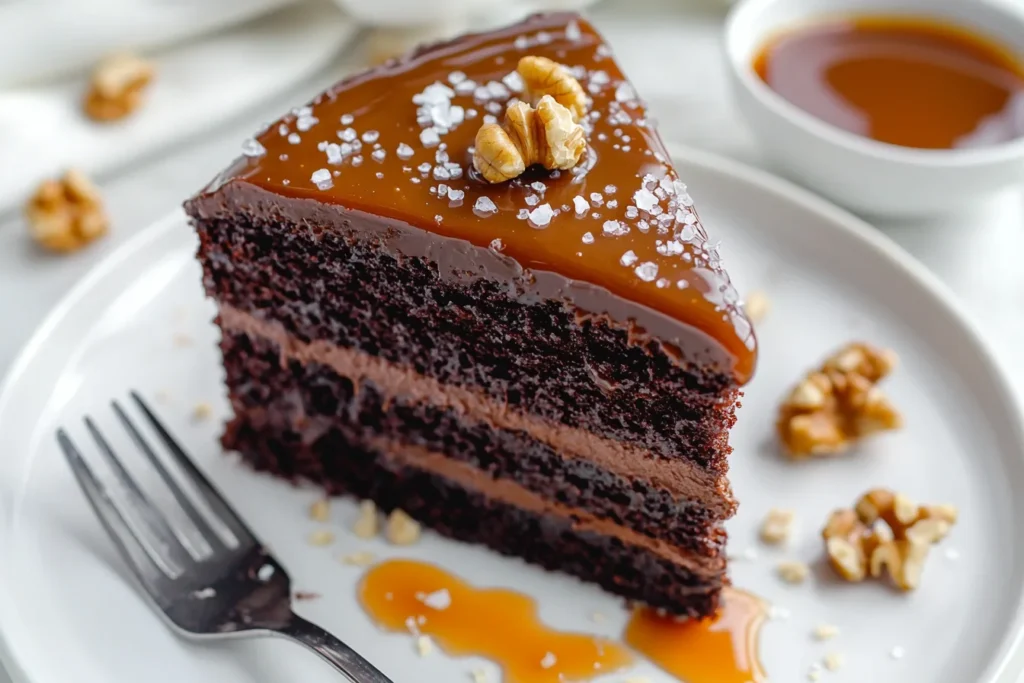
The key is to let your creativity shine while highlighting the bold, earthy taste of buckwheat flour. Your cakes will look and taste amazing!
Frequently Asked Questions (FAQs)
Is buckwheat good for cakes?
Yes, buckwheat is an excellent choice for cakes! Its nutty flavor adds a rich depth to baked goods. First, it’s naturally gluten-free, making it perfect for those with dietary restrictions. Next, it works well in both sweet and savory recipes, offering incredible versatility. Also, its darker color gives cakes a rustic, artisanal look.
For best results, try mixing buckwheat with other flours to balance texture and flavor. Then, add ingredients like cinnamon, honey, or vanilla for extra sweetness. If you’ve never tried it before, this flour might just become your new baking favorite!
Can I use buckwheat flour instead of all-purpose flour?
You can absolutely use buckwheat flour instead of all-purpose flour, but with a few adjustments. First, buckwheat is gluten-free, so it lacks the elasticity found in regular flour. To maintain structure, mix it with another flour like almond or rice flour.
Next, remember that buckwheat’s flavor is nutty and bold, which pairs well with sweet or savory ingredients. Use it in recipes like pancakes, brownies, or flatbreads for the best results. If you’re trying it for the first time, start by substituting only part of the all-purpose flour. This keeps your texture light and easy to manage!
Can you add baking powder to buckwheat flour?
Yes, you can add baking powder to buckwheat flour! Baking powder helps your baked goods rise and feel lighter. First, mix the baking powder well with buckwheat flour for even results. Then, follow the recipe’s guidelines for the right amount—usually around one teaspoon per cup of flour.
Since buckwheat is gluten-free, baking powder helps improve the structure of your cakes. Consider combining it with another flour like almond or rice for even better texture. Whether you’re baking pancakes, muffins, or bread, this simple step makes a noticeable difference. You’ll love how fluffy your treats turn out!
Can I use buckwheat flour instead of spelt flour?
Yes, you can substitute buckwheat flour for spelt flour, but some adjustments are needed. First, buckwheat flour is gluten-free, while spelt contains gluten, so the texture might differ. For better structure, mix buckwheat with almond or oat flour. Then, add a binding agent like eggs or flaxseed to help hold the batter.
Next, keep in mind that buckwheat’s flavor is bolder and nuttier compared to spelt. This makes it ideal for recipes like pancakes, muffins, or savory breads. Start by replacing a portion of spelt flour to see how it works in your recipes. This ensures excellent results while maintaining balance in flavor!
Discover the Joy of Baking with Buckwheat Flour!
Baking with buckwheat flour opens up a world of delicious possibilities. Whether you prefer sweet or savory cakes, this versatile flour is a fantastic choice. Its nutty flavor and unique texture bring something special to every recipe, making it a hit for all occasions. Plus, its health benefits, including being gluten-free and rich in nutrients, add an extra reason to give it a try.
First, experimenting with buckwheat flour is simple and rewarding. You can mix it with other flours, add your favorite flavors, or try new recipes. Then, it works beautifully with fruits, nuts, and spices, creating cakes that are as tasty as they are creative. Next time you’re in the kitchen, why not try a buckwheat cake?
What are your favorite ways to use buckwheat flour? Share your tips and experiences in the comments below. Your ideas could inspire others!

